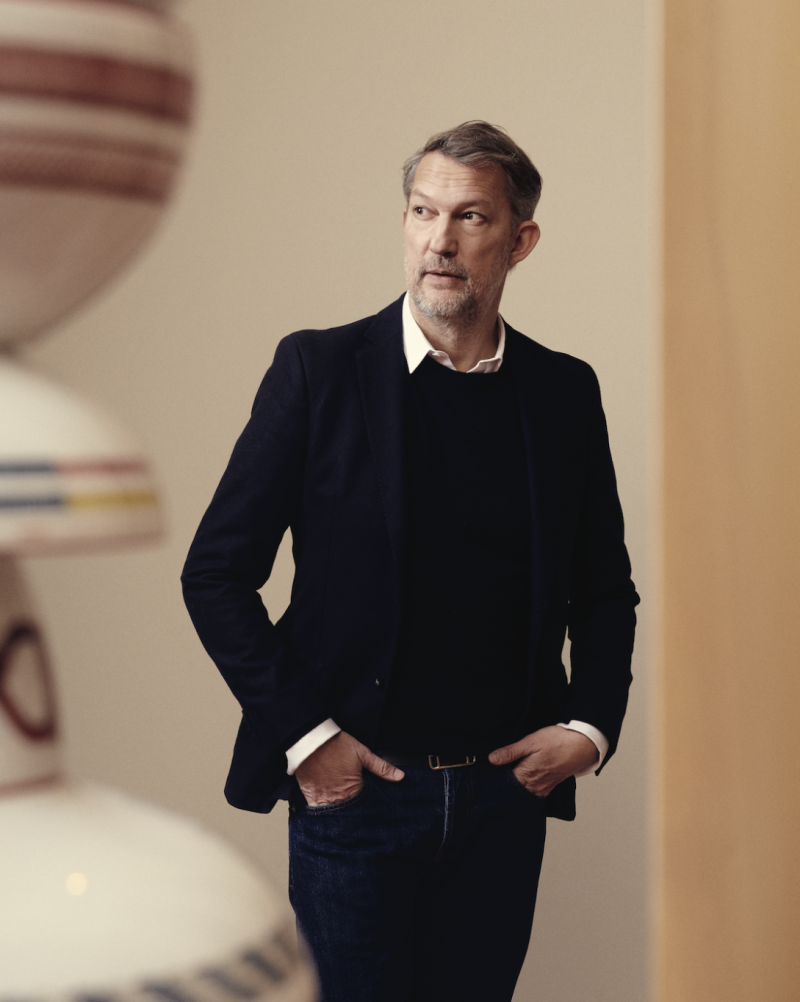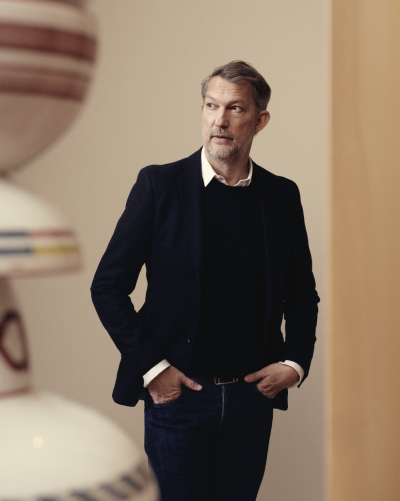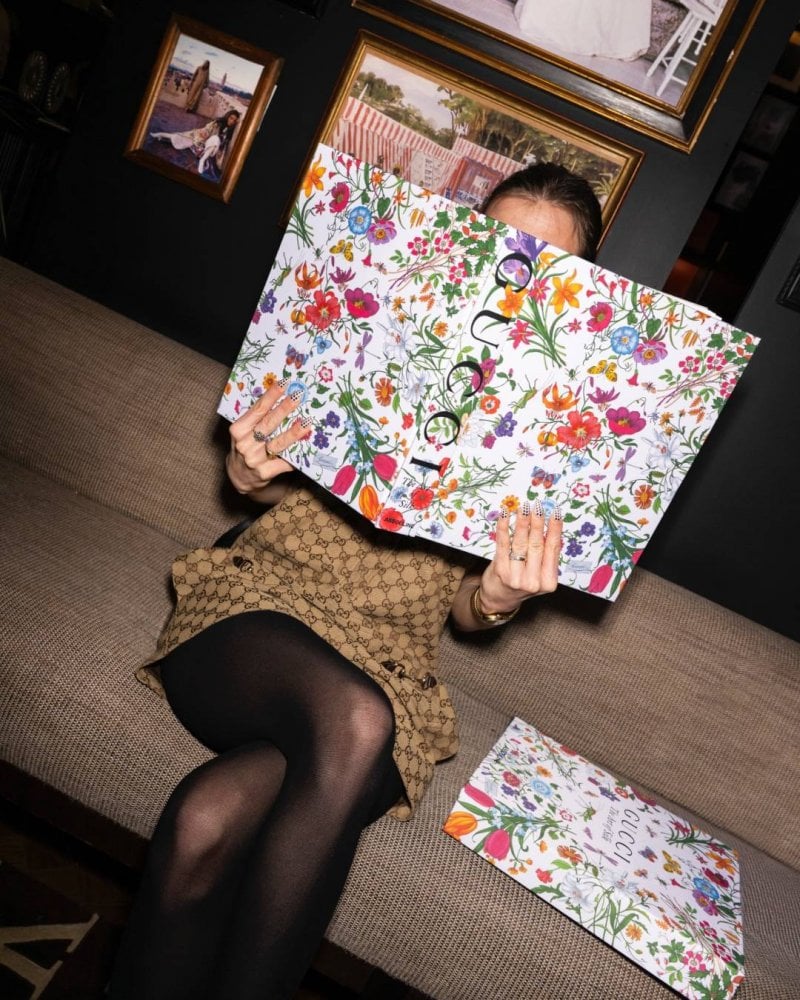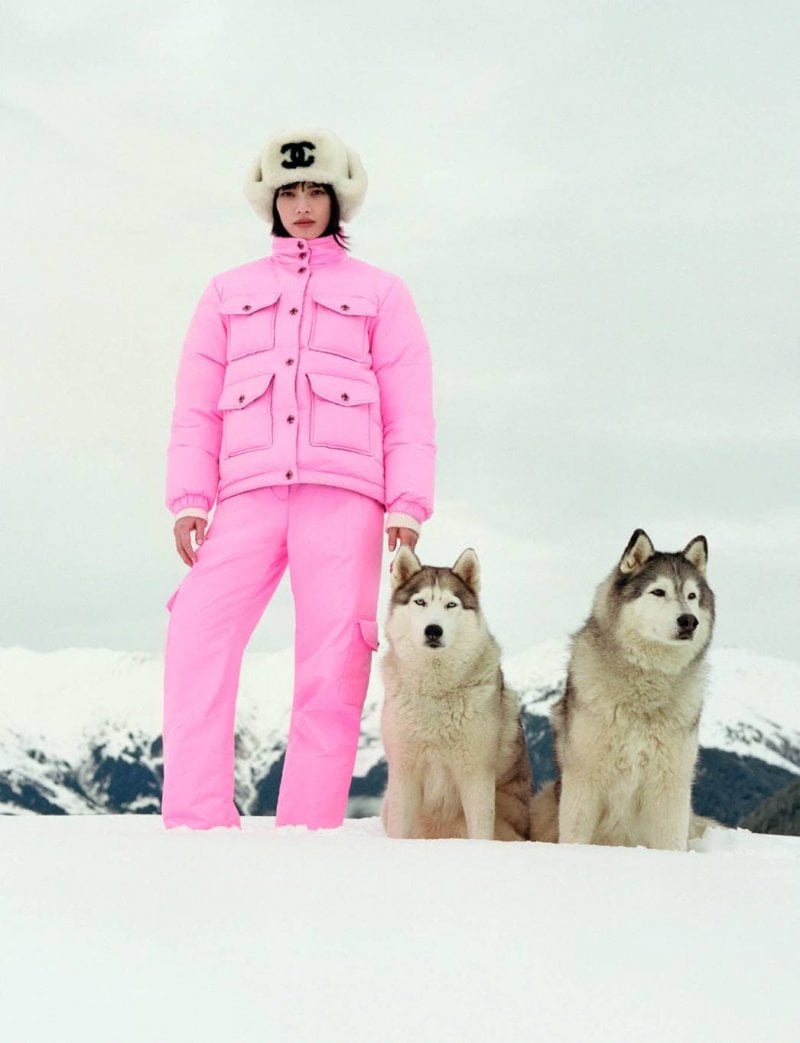Tableware holds a very special place in the world of Hermès, where equestrian inspirations are translated into pieces that become part of your home. After working as a graphic designer and artistic director, Benoît-Pierre Emery refocused his career in 2003 to design fashion accessories and established his own brand of silk scarves. With his first collection produced by Ateliers AS – a Hermès subsidiary, Hermès’ Artistic Director Pierre-Alexis Dumas commissioned him in 2005 to design a carré to celebrate the ten-year anniversary of the perfume 24 Faubourg – marking the start of a long and loyal collaboration. And after designing his first set of tableware for Hermès in 2007 and contributing to the design of another in 2011, he was appointed Creative Director of Hermès Tableware in 2013.
Tressages Équestres is yet another creative venture for Benoît-Pierre Emery, one he tells Azyaamode’s readers about in this conversation.
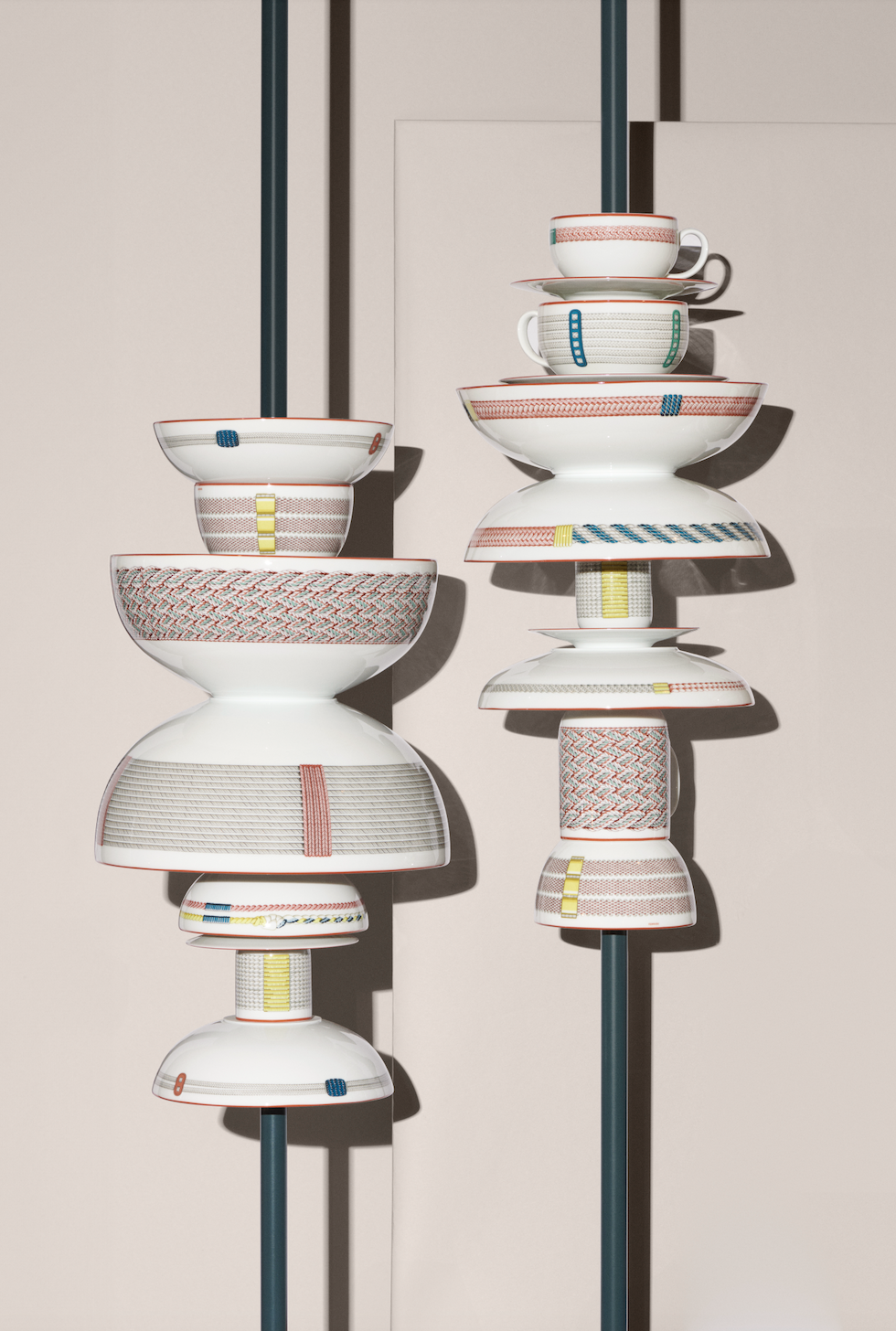
Image by Matthieu Lavanchy
How do you translate the equestrian inspiration that Hermès has always been known for in your creations for Hermès Tableware?
I wanted to continue our adventure in the equestrian world that we had started in our previous very graphic Saut Hermès collection (designed by Jochen Gerner) but in a very different style. More figurative and in a more classic orientation as well. Together we explored the archives of Emile Hermès at the Hermès conservatory. We were particularly attracted by the complexity of the straps, a wide dressage belt that passes under the horse's belly to secure the saddle and prevent it from slipping during a ride. The strap seemed to us to perfectly illustrate the hidden detail, so dear to the philosophy of the house. An invisible detail but subject to a lot of care and refinement despite everything. This piece therefore gave the first impetus to the service and to this play of very rich rhythms ideally braided, coming from harnesses, straps, riding crop. All of these designs pay homage to wonderful craftsmanship. This strap therefore served as a starting point for the inspiration of the service. We have enriched it with many other braids from the harness, rein and whip collections. It is a very rich vocabulary of elements which testify to this exceptional craftsmanship.
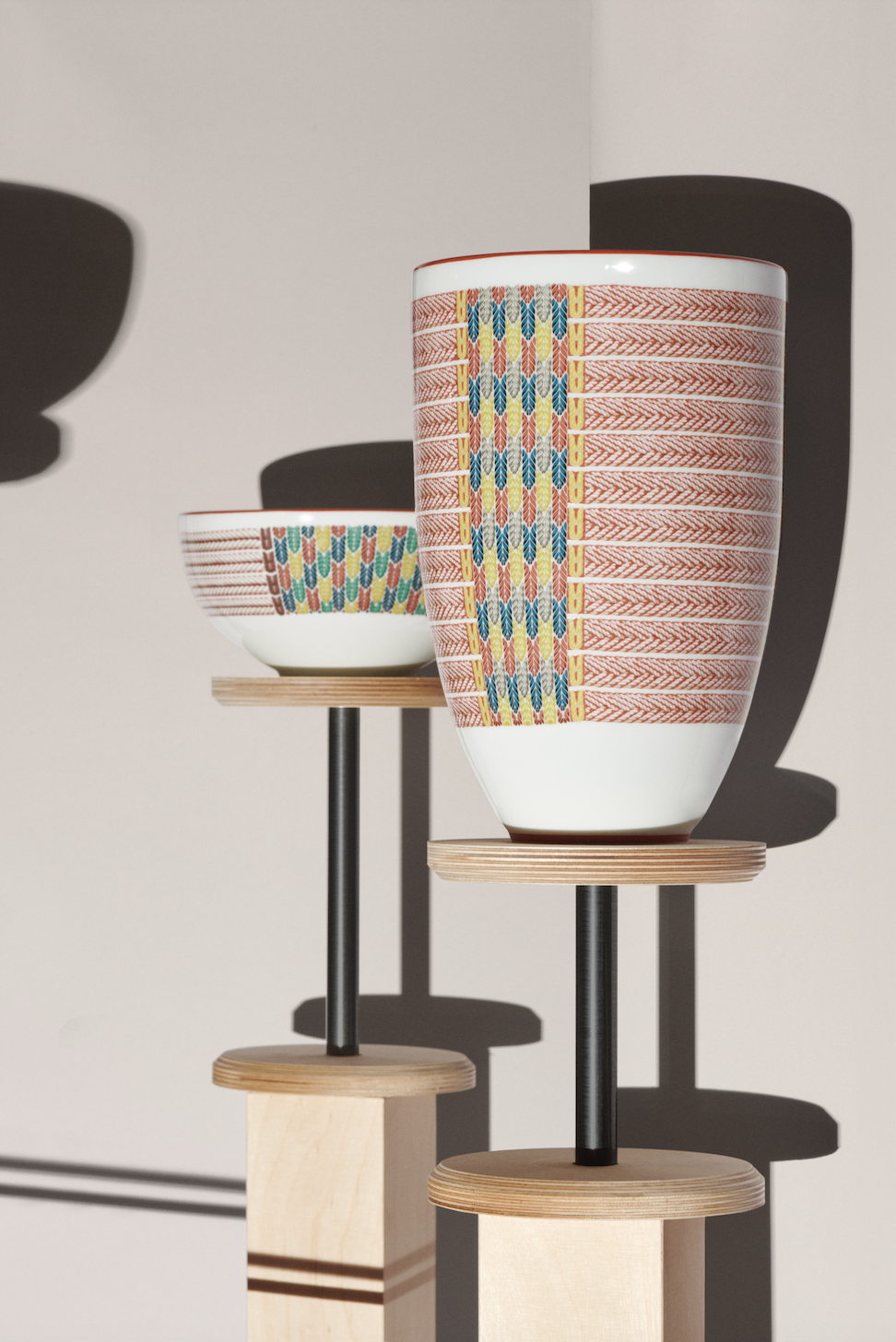
Image by Matthieu Lavanchy
There is a noticeable presence of color in Hermès’ tableware. What is the relationship between them and Hermès’ world?
Color always plays an essential role in each of our services. It is the identity of each of them.
For example with the Tressages Equestres collection, where the colors echo this premise: the light gray of the string line refers to the pencil, to drawing in its simplicity; the Terra-cota recalls the earth, giving rhythm and warmth to the whole; and the pep touches of blue/green/yellow come like a punctuation mark, a visual spark that confuses, creates surprise and sets the service apart from time.
Tell us a little bit about the Tressages Equestres collection and the ambience that it translates.
The dinner service offers a subtle mix of figurative and abstract representations. Comprising twenty-seven pieces, including ten new hollow-ware pieces, it is designed to complement cuisines from all over the world.
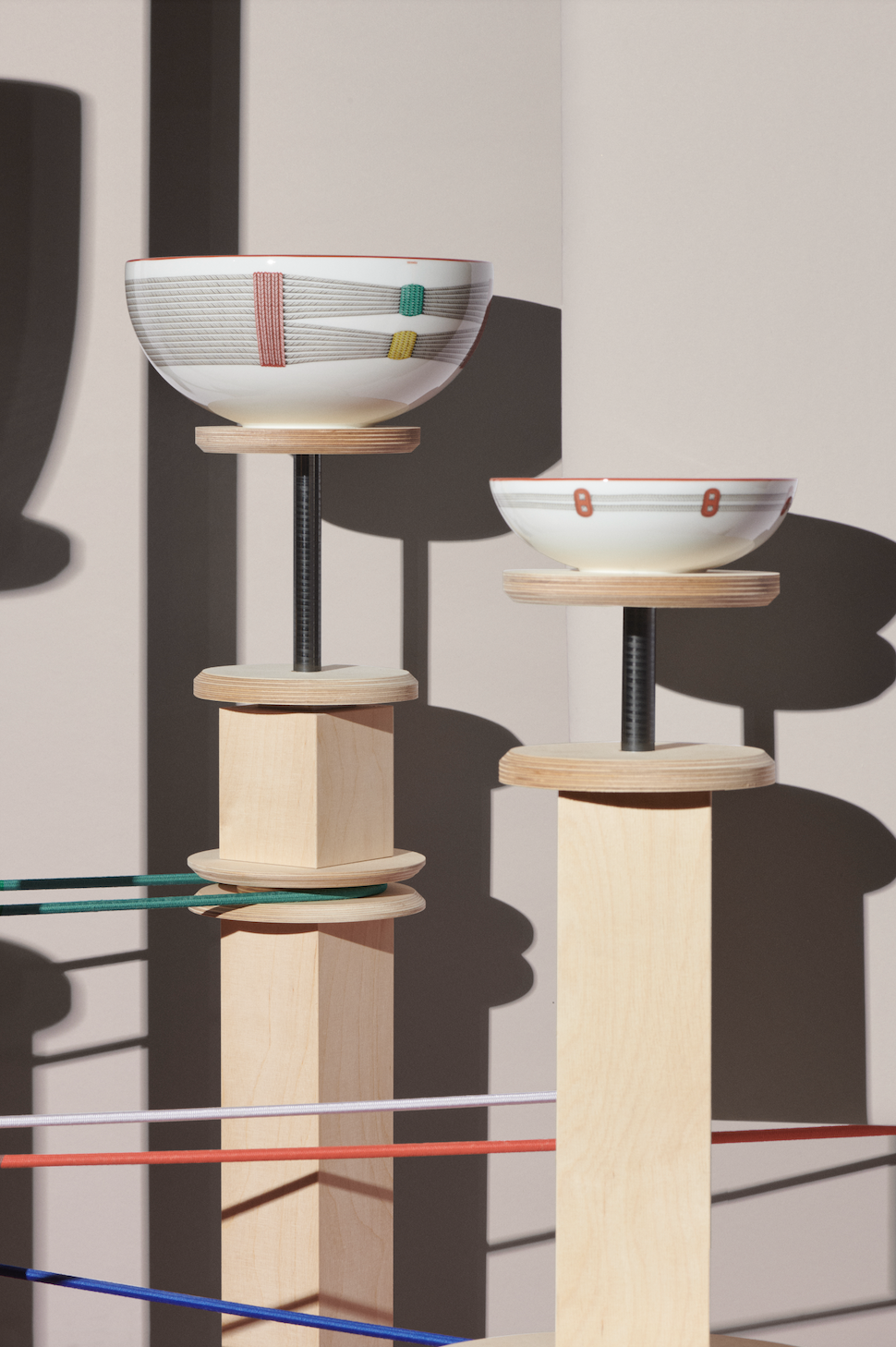
Image by Matthieu Lavanchy
What makes the materials used in the Tressages Équestres collection unique? Are there any specific techniques employed in the making of these pieces?
How we worked out the final design is a long story. We spent a year and a half just researching the technical aspects, almost three years in total. The quality of the drawings appeared in some cases to be blurred, so we had to fine-tune this to make the artistic expression clearer and as close to the original drawings as possible. Technically, the production presented many challenges. The idea was to create 15 new shapes, for everything from bowls to smaller parts. We also wanted to give the design some leather associations. Finding the right texture for such associations was important, but also difficult. Countless tests were performed, which included finding the right shape for the bowl. The normal thing is to build the bowl over a foot. Not having a small curve sticking up from the foot itself complicated production considerably. The result was a very clean and natural curve on the bowl. The large white area in the design is a summary of all aspects of the design of the collection. Everything that is important to Hermès is expressed in this tableware, such as light and shadows that give life, the artistic work, as well as the rich details in the tableware. We were focused on how we could create stories through a vocabulary implemented in the porcelain. We like to play with stories, and none of the 27 pieces have the same graphic expression. We have had countless discussions on the design. On porcelain you need to find another way to tell a story. The pieces of the tableware will also be living together as a set and must resonate with one another. They should play together and constitute a perfect harmony. The white area helps balance the design and gives the final result its character.
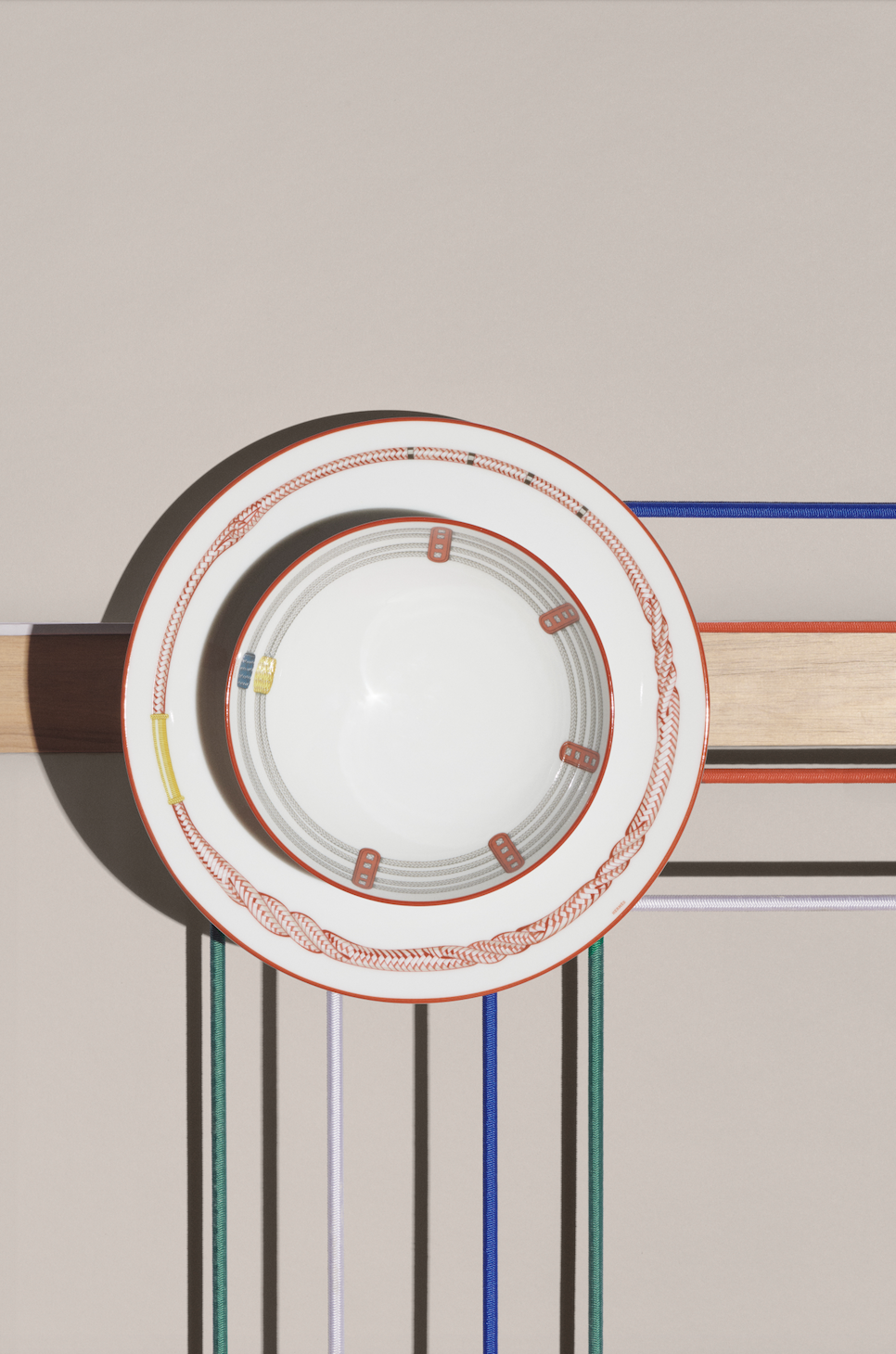
Image by Matthieu Lavanchy
What are the key characteristics that should be considered when choosing tableware?
A table service is like a jigsaw puzzle, the pieces of which can live independently or form a whole that can be modulated as you wish. They are seen and perceived for themselves and for a specific function. When it comes to tableware, the idea is to create a space where you can play with the food, create a plate, a dish, a table for yourself or for a moment of sharing. The combinations are endless. Set the art of life on the table, and give people the happiness of the moment they share it.
Is Tressages Équestres designed with everyday use in mind, or is it more of a statement piece for special occasions?
Each new collection is an opportunity to bring new shapes designed to best meet many uses. Tableware has evolved quite a bit in recent years and our lifestyles and dining habits have changed a lot. The table is generally less formal and the universal trend is towards relaxation and a cooler spirit. Thus the 12 new shapes, mainly bowls and cups of different proportions, are intended to accommodate the salads, soups, and gourmet dishes that make up our daily diet. I like the idea that this service can suit anyone. That it should be versatile and adaptable, more like a starting point, a precious tool that everyone can use as they please, for a simple lunch for two with friends, or for a grand dinner, depending on how the table is set, how the food is arranged, the lighting and the accessories. I want it to be as universal as possible. It's not a closed service that freezes a state of mind or style. It's a space for creativity and sensory experience, an invitation to play and to enjoy life, according to each person's personality and aspirations at any given moment.
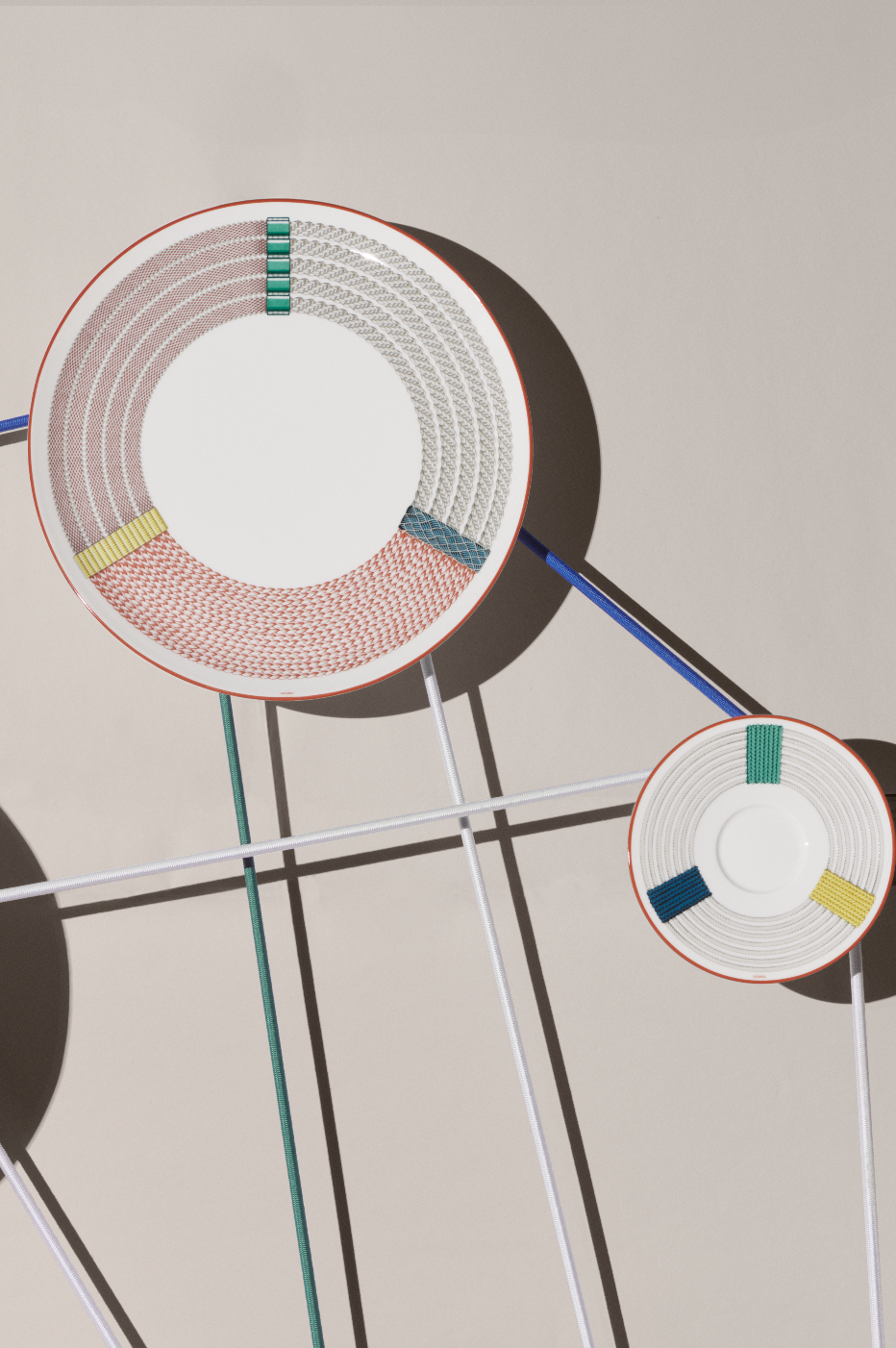
Image by Matthieu Lavanchy
- Keywords
- Hermès






